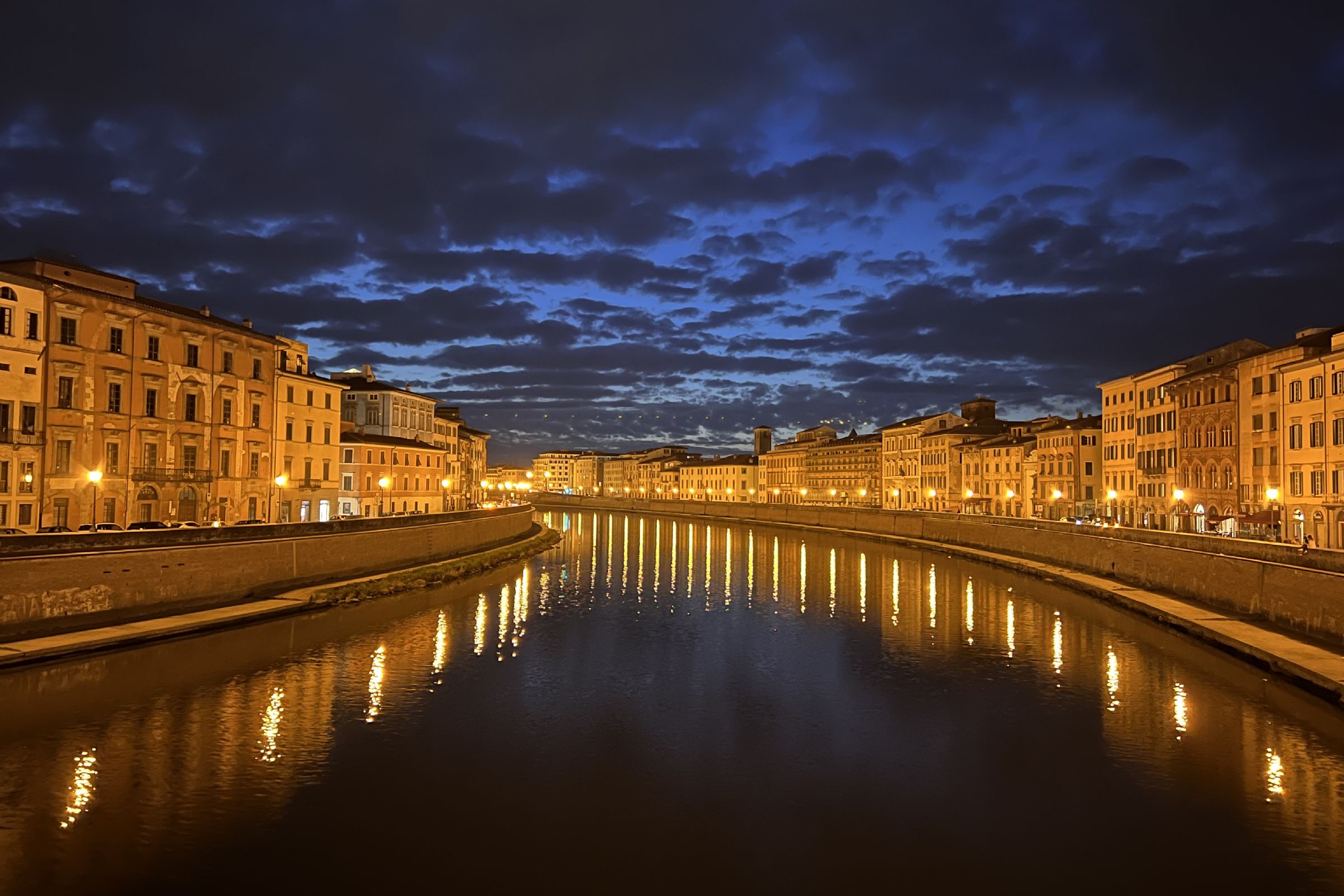The Arno river Pisa - Pisa along the Arno river information
Open roads which bring together most of ancient palaces and mansions of the city of Pisa and the Arno river, which consists, in the highest part of the banks of the Arno, between walls of brick and stone, known as the "shoulders", an integral part Pisa and nightlife venue for many young people.
The high surface area as the center from the Arno river historic Pisa so noble and distinguished, especially when the sunset, the lights placed along the parapets are reflected with pride in the beauty of the river, creating an atmosphere of romance and magic of long-awaited peace. The magic of these serpentine roads has charmed many Italian writers from the nineteenth century Europe but also in enhancing their writing, the beautiful scenery that Lungarni grateful to those who give cause for their interest.
There are many palaces that embellish the beautiful scenery, with the arrival of the Second World War many of the medieval buildings were subjected to bombing, recently repaired so dear. An ancient tradition makes the winding route of the Arno and an extremely charming, no doubt, creates an atmosphere without precedent: the illuminations. On June 16 of each year Pisa celebrates the feast of the saint patron saint, San Ranieri, with these unique festivities which include the lighting around the Lungarno only with the help of wax candles.
There are about seventy-thousand wax candles placed in glass beakers and mounted on white wooden frames, known as the "lingerie", with a form in which to settle the majesty of the ancient buildings, bridges, churches and towers on which are positioned. Pisa the night of June 16 wearing his dress better and elegant than ever taking part in a concert of light and shadow that make the protagonist, an incredibly romantic landscape that makes you dream even the most skeptical.
The Arno river in the historic center of Pisa:
The core of the old town of Pisa is crossed dall'andatura serpentine river Arno accompanied in turn by the four major banks of the Arno: Lungarno Galilei, Lungarno Gambacorti, Lungarno Medici, Lungarno Pacinotti out below in detail.
Lungarno Galilei
Embrace the district of San Martino, the homonymous street, once a district in memory of the brave Kinzica Pisan who managed to evade the attack of the Saracens, one of the most important streets of the medieval city that still preserves the ancient beauty. Among the palaces include the Palazzo Lanfranchi I note that today is home to many exhibitions and the Church of the Holy Sepulcher, dating from the twelfth century, which has a structure very similar to the circular church of Jerusalem.
- Churches and Palaces Lungarno Galilei
Lungarno Gambacorti
It includes the district of Saint Anthony, of great interest to the Palazzo Gambacorti, dating back to XIV, which now houses the city of Pisa, the Church of Santa Cristina, which preserves traces of its origins dating in the eleventh century, specifically in the area outside the apse. In opposite, the Church of Santa Maria della Spina, one of the most well-known throughout the city thanks its decor that makes it one of the most characteristic statements of the fourteenth century in Italy.
Lungarno Pacinotti
It includes the districts of Santa Maria, particularly interesting is the Royal Palace, built on a draft Buontalenti in 1583 and now houses the headquarters of the Superintendent and a museum housing works of art dating from the sixteenth century. The palace Lanfreducci, also known as "The Day", which now houses the Rector of the University and the Palazzo Agostini, a tower house featuring terracotta decorations of the fourteenth and fifteenth century.
- Churches and Palaces Lungarno Pacinotti
Lungarno Medici
Embrace the district of San Francisco, are of particular interest: Piazza Cairoli on which stands the parish church of San Pietro in Vinculis dating from the twelfth century, the Palace Toscanelli the sixteenth century, which now houses the historical archives. We can also admire the Church of St. Matthew and St. Matthew National Museum, which houses about two hundred paintings on wood, crosses of substantial size, number of medieval ceramics and armor, also there are also notable sculptures by Nicola and Giovanni Pisano and Donatello. In the same neighborhood, the Church of San Francesco.
- Churches and palaces on the river bank Medici
